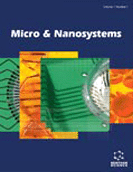Abstract
Introduction: Oil spill incidents caused by human activities can cause major habitat damage and pose serious threats to all living organisms living on and within sources of water and soil. Finding a solution for oil spills is necessary to protect ecosystems, the environment, and health. Nanotechnology seems to be an interesting tool in many applications, such as soil and water remediation and oil recovery. Nanoparticles are a good alternative since they are not as expensive as chemicals used to remove oil.
Objective: The prime purpose of this research work was the comparison of the additional displacement of sunflower oil from a single fracture using ferrofluids prepared with bare and novel covalent functionalized magnetic nanoparticles. Experiences were performed at constant nanoparticle concentration and variable flow rate and at constant flow rate and variable nanoparticle concentration. The novel ferrofluid stability and its recovery properties related to a low-cost process were explored.
Methods: Tests were carried out by image analysis. Stable ferrofluids were prepared using magnetic nanoparticles (MNPs) and novel covalent functionalized magnetic nanoparticles (MSMs). Their ability to displace the residual oil in a single fracture model previously invaded by an aqueous brine solution was tested. A flow channel of a single fracture by a typical transparent Hele-Shaw cell with 12% of its area covered by a random distribution of obstacles was modeled. Oil recovery was performed at three different flow rates: 0.36, 1.80, and 3.60 mL min-1, using relatively low ferrofluid concentrations (0.0125 wt%). Oil recovery was also carried out with MSM ferrofluid at a constant flow rate of 1.80 and 3.60 mL min-1 at different nanoparticle concentrations (0.00625, 0.0125, and 0.025 wt%).
Results: Ferrofluids prepared with MSMs were more effective for oil recovery than those prepared with bare nanoparticles due to their surfactant behavior for all flows studied here. A 7.86% extra percentage of oil was removed after brine flooding. Oil recovery using MSM ferrofluid at a constant flow rate of 1.80 and 3.60 mL min-1 increased linearly with nanoparticle concentration. Magnetic nanoparticles can be efficiently recovered and reused in at least three oil displacements for the fracture model used as covalent functionalization promotes ferrofluids' stability.
Conclusion: The characteristics of the MSM amphiphilic novel coating cause the nanoparticles to be attracted to both water and oil, enhancing oil displacement. These results indicate that this novel material, whose structure stability is related to the covalent bonding of organic coating, can be considered for remediation and oil recovery in fractured media.
Keywords: Nanoparticles, ferrofluid, recovery, fracture, nanotechnology, magnetic nanoparticles.
[http://dx.doi.org/10.3389/fmicb.2017.01501]
[http://dx.doi.org/10.26655/jmchemsci.2019.6.2]
[http://dx.doi.org/10.1007/s11427-017-9271-1] [PMID: 29675551]
[http://dx.doi.org/10.1016/j.jmmm.2004.11.155]
[http://dx.doi.org/10.1039/C5EW00152H]
[http://dx.doi.org/10.1021/acs.nanolett.5b04735] [PMID: 27031328]
[http://dx.doi.org/10.1016/j.petrol.2020.106943]
[http://dx.doi.org/10.1007/s13202-019-00825-z]
[http://dx.doi.org/10.1016/j.enmm.2021.100443]
[http://dx.doi.org/10.1016/j.susmat.2019.e00128]
[http://dx.doi.org/10.1002/aelm.201800831]
[http://dx.doi.org/10.1007/s12011-020-02138-3] [PMID: 32377944]
[http://dx.doi.org/10.1155/2019/3702518]
[http://dx.doi.org/10.3389/fbioe.2019.00113] [PMID: 31179276]
[http://dx.doi.org/10.3390/nano10020387] [PMID: 32102185]
[http://dx.doi.org/10.1007/s13346-022-01216-4] [PMID: 35908132]
[http://dx.doi.org/10.3390/ijms232415980] [PMID: 36555619]
[http://dx.doi.org/10.3390/ijms22041942] [PMID: 33669290]
[http://dx.doi.org/10.3390/nano9111629] [PMID: 31744091]
[http://dx.doi.org/10.1038/s41565-021-01027-7] [PMID: 34931031]
[http://dx.doi.org/10.1021/acsnano.9b07569] [PMID: 31944662]
[http://dx.doi.org/10.1002/smll.202104632] [PMID: 34936204]
[http://dx.doi.org/10.3390/ijms22052585] [PMID: 33806682]
[http://dx.doi.org/10.1002/adfm.201903467]
[http://dx.doi.org/10.3390/pharmaceutics15020447]
[http://dx.doi.org/10.1021/acsnano.3c01609] [PMID: 37141496]
[http://dx.doi.org/10.1021/acsami.2c13108] [PMID: 36100583]
[http://dx.doi.org/10.1016/j.jcis.2022.08.154] [PMID: 36081208]
[http://dx.doi.org/10.1021/la8028935] [PMID: 18991414]
[http://dx.doi.org/10.1016/j.enmm.2020.100305]
[http://dx.doi.org/10.1016/j.chemosphere.2021.129975] [PMID: 33631403]
[http://dx.doi.org/10.1039/D0GC00734J]
[http://dx.doi.org/10.3390/nano10040656] [PMID: 32244653]
[http://dx.doi.org/10.1016/j.petrol.2018.02.048]
[http://dx.doi.org/10.1557/jmr.2019.129]
[http://dx.doi.org/10.1021/acsomega.3c05957]
[http://dx.doi.org/10.1166/mex.2017.1401]
[http://dx.doi.org/10.3390/coatings13101772]
[http://dx.doi.org/10.1016/j.cis.2020.10216]
[http://dx.doi.org/10.1016/j.matchemphys.2019.121910]
[http://dx.doi.org/10.1016/0169-7722(94)90073-6]
[http://dx.doi.org/10.1103/PhysRevE.63.066306] [PMID: 11415226]
[http://dx.doi.org/10.1029/2006WR005324]
[http://dx.doi.org/10.1007/s11242-018-1014-5]
[http://dx.doi.org/10.1039/b821917f] [PMID: 19763240]
[http://dx.doi.org/10.1039/C4RA05583G]
[http://dx.doi.org/10.1155/2004/401015]
[http://dx.doi.org/10.1515/ci.2011.33.2.22a]
[http://dx.doi.org/10.1007/s10904-020-01636-0]
[http://dx.doi.org/10.1007/s11814-017-0075-4]
[http://dx.doi.org/10.1021/ja01269a023]
[http://dx.doi.org/10.1016/j.colsurfa.2009.01.009]
[http://dx.doi.org/10.1016/j.jcis.2010.11.060] [PMID: 21167497]
[http://dx.doi.org/10.3389/fmolb.2020.587012] [PMID: 33324678]
[http://dx.doi.org/10.1021/acsami.5b08028] [PMID: 26393678]
[http://dx.doi.org/10.3390/molecules27123796] [PMID: 35744920]
[http://dx.doi.org/10.1016/j.eurpolymj.2006.10.021]
[http://dx.doi.org/10.1016/S0001-8686(98)00087-6]
[http://dx.doi.org/10.1016/j.jcis.2017.09.067] [PMID: 28972895]
[http://dx.doi.org/10.1016/j.watres.2013.02.056] [PMID: 23582309]


























